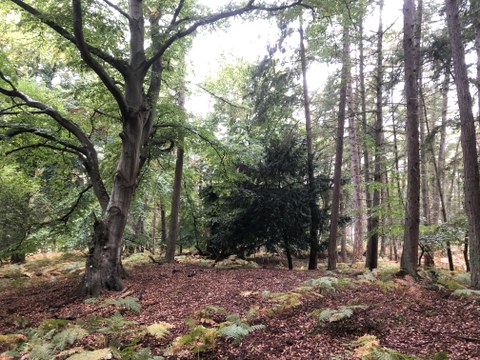Mar 01, 2024
Forest history from a single tree species perspective - the example of European yew

European yew on the Darss-Zingst peninsula
The forests along the southern Baltic Sea coast harbour some presumably autochthonous stands of the rare and endangered European yew (Taxus baccata L.). Using the example of an occurrence on the Darss-Zingst peninsula, the population dynamics of the yew since the late Holocene were interdisciplinarily investigated and linked to the forest history of the area. Pollen analysis showed that yew has been present for at least 2,600 years and thus indeed represents an autochthonous tree species in the area. Likely, the yew was originally part of a second tree storey and of forest margins within a mixed forest mainly consisting of several deciduous tree species and Scots pine. Historical evidence reveals that yew was still occurring in the middle of the eighteenth century, but then had nearly disappeared by the end of the nineteenth century due to grazing by livestock, high game populations and clear-cutting. First replanting took place in the 1930s/1940s and 1950s/1960s, followed by campaigns in the 1990s and 2000s. The current yew population mainly comprises young individuals with a total number of ca. 1,300 trees.
The study by Knut Kaiser an co-workers, with contributions of Marieke and Ernst van der Maaten, has now been published in the European Journal of Forest Research. It highlights that it has been possible to re-establish an autochthonous yew occurrence that was nearly extinct in historical times, and may encourage further measures to give this species a chance elsewhere in the wider region.
